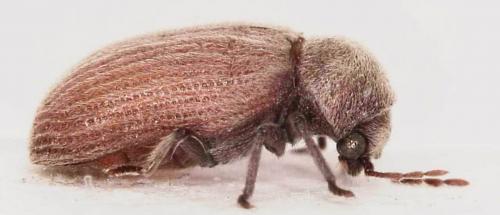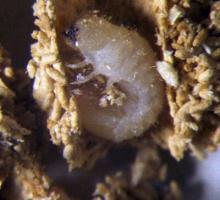Adult
Size
4 to 6 mm long
Aspect
Characteristic aspect, sturdy body, sharply convex elytra. When at rest, head and thorax more or less at a right angle with elytron axis.
Head partly covered by the pronotum, which is quite prominent. Fairly long antennae, last 3 articles bigger and more or less serrate.
Elytra are striated lengthwise by rows of pits, and covered in a double short pubescence (flat and erect).
Colour
Uniformly reddish brown. Golden pubescence on elytra


 Vrillette des bibliothèques
Vrillette des bibliothèques  Library beetle
Library beetle  Tarlo de las bibliotecas
Tarlo de las bibliotecas  Nagekäfer
Nagekäfer 

